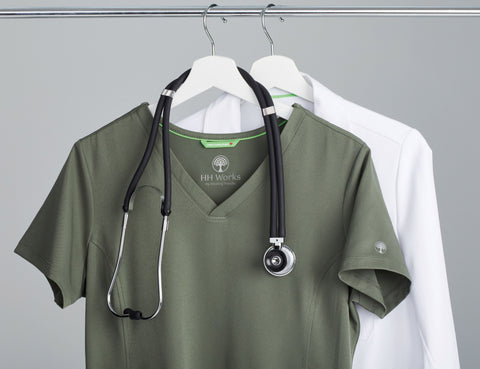The Evolution of Nursing Uniforms: From Traditional to Modern
Nursing uniforms have gone through a remarkable transformation over the years, evolving from traditional attire to modern, functional garments. In this blog post, we'll take a journey through time and explore the fascinating evolution of nursing uniforms, highlighting the factors that have influenced these changes.

The Early Days of Nursing In the early days of nursing, uniforms were designed to reflect the profession's commitment to cleanliness and modesty. Nurses wore long, white dresses with high necklines and full-length sleeves. The dresses were often made of stiff, heavy fabric and were accessorized with aprons and caps. These uniforms conveyed a sense of professionalism and a dedication to patient care.
Functional Changes in World War II During World War II, nursing uniforms underwent significant changes to meet the demands of the time. With the shortage of healthcare workers, nurses had to adapt their attire to ensure practicality and mobility. The traditional dresses gave way to shorter, more practical designs. Pants became more widely accepted for female nurses, allowing for greater ease of movement and efficiency in their duties.

The Rise of Scrubs In the 1970s, the introduction of scrubs revolutionized the nursing uniform. Scrubs were initially adopted by surgical personnel due to their functionality and ease of sterilization. The popularity of scrubs quickly spread to other healthcare settings, as they offered comfort, durability, and a more unisex design. Scrubs also came in a range of colors, allowing nurses to express their individuality and add some vibrancy to their work environment.
Contemporary Uniforms Today, nursing uniforms continue to evolve to meet the needs of modern healthcare settings. The focus is on comfort, functionality, and infection control. Many healthcare facilities require specific colors or styles to differentiate between departments or roles. Some institutions have embraced custom-designed scrubs that reflect their brand identity while maintaining professionalism.
Personal Protective Equipment (PPE) With the global COVID-19 pandemic, personal protective equipment (PPE) has become an integral part of nursing uniforms. Masks, face shields, gloves, and gowns are now essential elements for infection prevention and control. These additions ensure the safety of healthcare professionals and patients alike.

The evolution of nursing uniforms reflects the changing landscape of healthcare and the evolving roles of nurses. From the traditional dresses that symbolized professionalism and modesty to the functional and comfortable scrubs of today, nursing uniforms have come a long way. As healthcare continues to evolve, nursing uniforms will likely adapt to new technologies and infection control measures, ensuring that nurses can perform their vital roles while feeling comfortable, protected, and confident in their attire.







Leave a comment